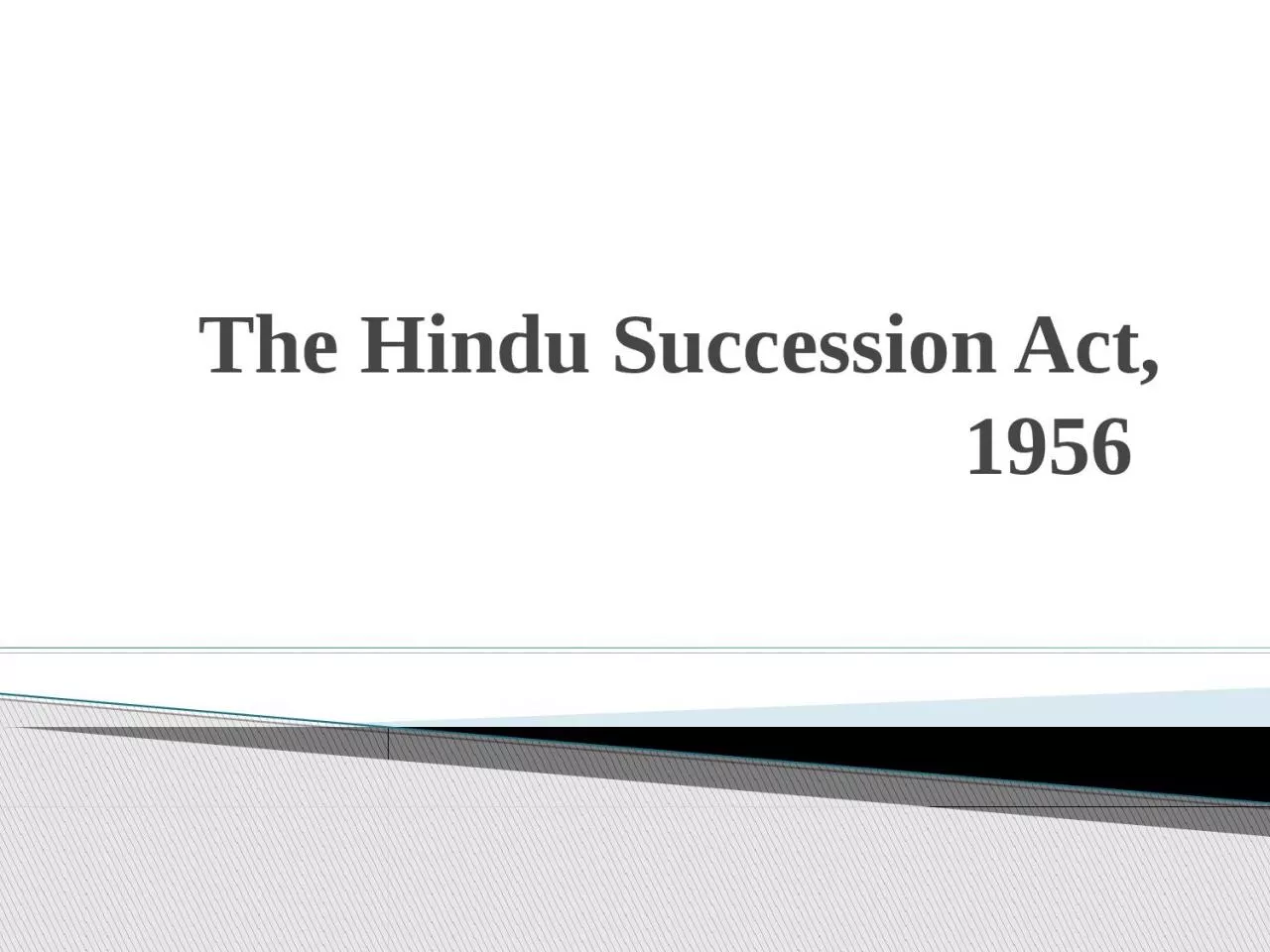

The Hindu Succession Act 1956 is an enactment which lays down a comprehensive and uniform system of law relating to the succession and inheritance of property The act deals with intestate and testamentary succession ID: 918703
Download Presentation The PPT/PDF document "The Hindu Succession Act, 1956" is the property of its rightful owner. Permission is granted to download and print the materials on this web site for personal, non-commercial use only, and to display it on your personal computer provided you do not modify the materials and that you retain all copyright notices contained in the materials. By downloading content from our website, you accept the terms of this agreement.
Slide1
The Hindu Succession Act, 1956
Slide2The Hindu Succession Act, 1956 is
an
enactment which lays down a comprehensive and uniform system of law relating to the succession and inheritance of property.The act deals with intestate and testamentary succession.The Act combines all the aspects of Hindu succession and brings them into its ambit.
The Hindu Succession Act, 1956
Slide3The Act applies to a Hindu,
B
uddhist, Sikh or Jain by religion.Who is not a Muslim, Christian, Parsi, Jew, unless it is proved that such person would not be governed by Hindu law or custom. This
Act
extends to the whole of India.This Section shall not apply to any Scheduled Tribes (Art. 366 of Indian Constitution) unless otherwise directed by the Central Government by a notification in the Official Gazette.
APPLICABILITY OF THE ACT
Slide4Agnate-
A
person is said to be an agnate of another if the two are related by blood or adoption wholly through males. Cognate- A person to be a ‘cognate’ of another if such a person is related to the other by blood or through adoption but not wholly through males.
Heir
- Heir is any male or female person, who is entitled to receive the property of the intestate. Intestate- A person who dies without leaving behind a will is referred to as intestate.
DEFINITION OF IMPORTANT TERMS
Slide5Full Blood-
Two persons descended from common ancestor by the same wife (same father and mother)
Half blood- Two persons descended from common ancestor but by the different wives. ( same father different mothers)Uterine blood- Two persons are descended from common ancestress but by the different husbands. (same mother different fathers)
Slide6TYPES
OF SUCCESSION Intestate Testamentary Succession Succession
TYPES OF SUCCESSION
Slide7S
uccession
of the property when is governed by a testament or a will, then it is referred as testamentary succession. Hindu male as well as female has a right to make a will for his or her property.That will shall came into force only after the death of person making it.
The will must be valid.
Only the last valid will of person shall be enforceable. The property must be distributed as per the prescribe in the will. TESTAMENTARY SUCCESSION
Slide8When a Hindu dies without making will that person in known as
intestate.
In absence of will his or her property shall be distributed as per the law of inheritance and that is called intestate succession. Section 8- 14 of Hindu Succession Act, 1956 deals with the distribution of property of a Intestate Hindu male.INTESTATE SUCCESSION
Slide9The property of a hindu male died intestate shall be distributed among:
CLASS I HEIRSCLASS II HEIRSAGNATESCOGNATES The order of distribution is firstly the property shall be distributed among the relatives enumerated in class I heirs.
Section 8
General rules of succession in case of a hindu male
Slide10In absence of relatives of class I heirs than it will be distributed to the relatives enumerated in class II heirs.
The class II heirs are divided into 9 entries. Therefore entry one will be preferred over entry 2 and entry 2 shall be preferred over entry 3 and so on. At last if no one is there till entry 8 than will entry 9 will be entitled to property.
In case no relatives alive who were enumerated as Class II heirs than the property shall divide among the agnates.If no agnates are alive than cognates.In case if there in no cognate than the property will be taken by the Government by way escheat.